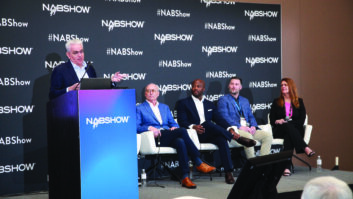The author is chairman of the DRM Consortium. Her commentaries appear regularly at radioworld.com.
Much ink has been used recently on the topic of carmakers dropping AM reception capability in cars, especially in EVs. Hence the “for and against” discussions in the U.S., at least, about the “AM for Every Vehicle Act.”
Shortwave reception, with is large coverage possibilities, has often been criticized for its audio quality which can be noisy and subject to annoying levels of variations. In cars, there are other drawbacks like less than optimum antennas, which are mostly tuned for vertical polarization while shortwave is horizontally polarized.
It is undeniable that analog AM Shortwave reception in cars can be quite unreliable, also due to lower average-SNR over time. But all these negative points are not always present. In some places (take Nigeria and the BBC broadcasts) the shortwave transmissions are great, in a quality that is not much different from that of a FM broadcast.
Citing the interference and other drawbacks, allegedly magnified by the arrival of EVs, many regulators, legislators and broadcasters have decided to ditch shortwave and close down transmission sites, calling shortwave obsolete. The reasons are diverse, from some clear commercial interests, energy cutting exercises and a fall in audiences, too.
[Related: “Letters: AM’s Future, Shortwave’s Past and More“]
A few general points to examine though. One is that once a shortwave frequency is given up, it is gone forever (a bit like giving up a chunk of the national territory; and would you do that willingly?). This also opens the possibility that others, with a different view or goal, might snap them immediately (see the Chinese grab of Australian abandoned frequencies).
But what many specialists fail to mention is that there is a digital solution for interference in shortwave and it is called DRM in shortwave. The open DRM standard is the only terrestrial broadcasting system offering a digital, much better alternative.
DRM eliminates unstable and degraded audio, saves spectrum and, more importantly, a lot of energy costs (between 40–80%). Besides, you could use the DRM broadcasts and the data capability of the standard to also send emergency or disaster warnings.
Relying just on mobiles has recently shown many flaws and breakdowns (failure to transmit the messages, sending them to indiscriminate number of communities and creating unnecessary panic, etc.)
Using Shortwave DRM AM band transmissions can provide reliable reception quality till 8-10dB SNR. DRM supports various robust modes (B,C,D) and advanced audio coding. DRM provides higher level of defense against the “electrical noise” in cars than analog, and antennas can be optimized for greater reception.
The DRM Consortium is ready to cooperate with the automotive industry, with all interested parties, to back these statements based on data (still limited) with all the facts necessary to give all players the information they need for the right decisions. If you are interested, please write to: [email protected]






